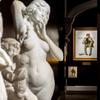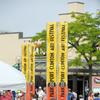The “Beautiful Age” of Painting: Works of the Belle Époque
- June 15, 2012 13:19
The late 19th and early 20th centuries were exciting times to be in France. The end of the Franco-Prussian War provided the catalyst for a period of peace and prosperity known today as the Belle Époque, or Beautiful Age. Changes abounded in nearly every facet of society-from science, philosophy and architecture, to music, literature, and especially, fine art. French artists capitalized on this golden age, using the changes around them as the inspiration to create outstanding masterpieces.
French civic planner Geoges-Eugène Haussmann's renovation of Paris (which lasted 1853 to the end of the 19th century) forever changed the face of the city. This modernization gave way to wide avenues and open spaces. Streets and public venues were often lined with people, enjoying the sights of the grand City of Lights. Often referred to as the "Parisian Poet of Painting," Edouard Cortès devoted most of his life to chronicling the vibrant energy and beauty that was Paris. In L'Arc de Triomphe, we see the artist's Impressionist technique shine through, with splashes of color and wonderfully rendered reflections upon the rain-soaked streets as pedestrians fill the area around the iconic monument.
France became the center of fashion in the Belle Époque, with every well-heeled young woman anxious to follow the latest trends. Coupled with the evolving attitudes regarding women's independence and overall place in society, and the popular fashion houses of the day took heed by creating clothing that was more practical than giant gowns and hoop skirts, yet still elegantly crafted and ornate. The iconic actress Sarah Bernhardt was both a symbol of style and the burgeoning liberation of women, a trait that is dutifully captured in this painting entitled Sarah Bernhardt Hunting with Hounds (Diane) by Louise Abbéma. She captures the renowned thespian in a fashionable and functional riding habit, taking a dignified, confident stance as she grasps the leash of her hounds. Jean Béraud explores these themes as well in Femme en Priere. The clash between traditional and nonconformity is reflected in the woman's desire to be devout, but on her own terms, as she relaxes on the back of the chair in front of her.
The paintings of the Belle Époque artists remind us of an era when time was taken to explore, and dare I say, enjoy life. Perhaps, along with relishing in their beauty, these outstanding paintings can help us regain that joie de vive many of us rarely get the chance to stop and appreciate.
To view M.S. Rau Antiques' selection of Belle Époque Art, click here.













100x100_c.jpg)







